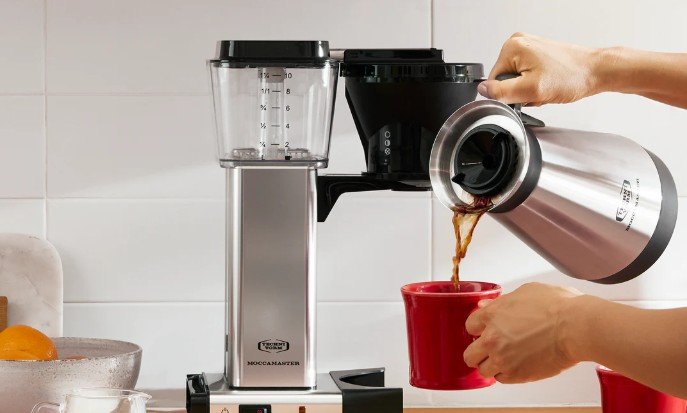Brewing the perfect cup of coffee starts with one simple question: how much coffee should you put in your coffee maker? Getting the right amount can make all the difference between a weak, watery brew and a rich, flavorful cup that kickstarts your day.
Whether you’re using a drip coffee maker, a single-serve machine, or a French press, understanding the ideal coffee-to-water ratio helps you unlock the best taste every time. You don’t have to be a barista to get it right—just a few simple tips can elevate your morning routine and save you from wasting coffee or ending up with a bitter mess.
Let’s dive into how to measure your coffee grounds perfectly so you can enjoy a consistently delicious brew without any guesswork.
Understanding Coffee to Water Ratios
Mastering the coffee to water ratio ensures your brew hits the perfect balance of flavor. You’ll achieve richer taste and avoid over- or under-extraction by knowing the right measurements and factors influencing strength.
Standard Measurements for Brewing
Use 1 to 2 tablespoons of coffee grounds per 6 ounces of water for a standard brew. For instance, 12 tablespoons suit 36 ounces in larger coffee makers. Adjust measurements based on your machine’s capacity but keep this ratio as the foundation for balanced flavor.
Factors That Affect Coffee Strength
Coffee strength depends on grind size, brewing time, and water temperature. Besides ratio, a finer grind extracts more flavor, increasing strength, while coarser grinds produce lighter tastes. Shorter brew times yield weaker coffee, and over 205°F water risks bitterness. Consider these alongside the ratio to tailor your cup precisely.
Measuring Coffee for Different Coffee Makers
Accurate coffee measurement depends on the brewing method. You can adjust the coffee amount to match your coffee maker type for best results.
Drip Coffee Makers
Use 1 to 2 tablespoons of coffee grounds per 6 ounces of water for drip coffee makers. For a 12-cup machine, measure about 12 to 24 tablespoons of grounds. Use a medium grind size to ensure proper extraction without clogging the filter.
Espresso Machines
Use 7 to 9 grams (about 1 to 1.5 tablespoons) of finely ground coffee per single espresso shot (1 ounce). For a double shot (2 ounces), use 14 to 18 grams of coffee grounds. Tamp the grounds evenly for consistent pressure and balanced flavor.
French Press and Other Methods
Use a coarser grind with 1 to 2 tablespoons of coffee per 6 ounces of water for French press brewing. Let the coffee steep for 4 minutes before pressing. For cold brew or pour-over, adjust grounds and steeping or dripping time according to specific device instructions to maintain flavor balance.
Tips for Adjusting Coffee Amounts
Adjusting coffee amounts helps you tailor each brew to your liking and the specific beans you use. Use these tips to refine the balance between strength, flavor, and aroma.
Personal Taste Preferences
Increase coffee grounds if you prefer a stronger, bolder flavor, especially when brewing regular drip or French press coffee. Decrease the amount for a lighter, milder cup without losing clarity. Remember, the standard ratio remains a solid starting point, but fine-tune it within 1 to 2 tablespoons per 6 ounces of water depending on your taste. For espresso, adjust single-shot measurements by 0.5 to 1 gram to suit your preferred intensity.
Bean Roast and Grind Size Impact
Darker roasts release flavors faster, so reduce coffee grounds slightly to avoid bitterness. Lighter roasts may require more grounds to extract full flavor. Use finer grinds for espresso machines and coarser grinds for French press or cold brew; grind size directly affects extraction rate and perceived strength. If your coffee tastes weak or sour, try increasing grounds or choosing a slightly finer grind. If it tastes bitter or over-extracted, reduce grounds or opt for a coarser grind.
Common Mistakes When Measuring Coffee
Measuring coffee by volume using tablespoons often leads to inconsistent results because spoon sizes vary. Using a kitchen scale to weigh coffee grounds in grams guarantees precision and consistency for every brew. Assuming a tablespoon equals a fixed weight ignores differences in coffee grind size and density.
Packing coffee grounds tightly in the scoop increases volume but results in more coffee than intended, causing bitterness. Scooping loosely or leveling off grounds avoids over-extraction from excess coffee. Ignoring water measurement also affects strength; using more water than measured coffee dilutes flavor, while less water concentrates it too much.
Not adjusting the coffee amount for different brewing methods creates imbalance. For example, espresso requires finer grind and precise grams, while French press uses coarser grind but similar coffee-to-water ratios. Using the same tablespoon measurement across methods disregards these differences.
Failing to consider the roast level when measuring contributes to poor taste. Dark roasts extract faster, so using the same amount as light roasts can cause overpowering bitterness. Adjusting coffee quantity in correlation with roast profile optimizes flavor.
Measuring coffee without calibrating your tools or applying a standard ratio results in unreliable strength and flavor each time. Consistently measuring coffee by weight and adjusting according to brew method and roast level eliminates common errors and improves your coffee experience.
Conclusion
Finding the right amount of coffee for your coffee maker is key to brewing a cup that matches your taste perfectly. By paying attention to coffee-to-water ratios and using a kitchen scale for accuracy, you can avoid common pitfalls and enjoy consistent flavor every time.
Don’t be afraid to experiment with grind size, roast level, and coffee amounts until you discover what works best for you. Your ideal cup is just a few adjustments away. Keep refining your process, and you’ll never settle for a mediocre brew again.

